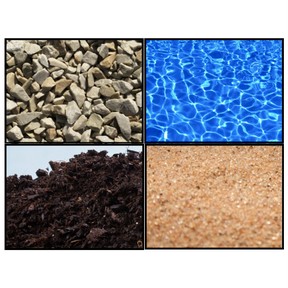
Effect of sunlight on the Earth's surface
I can describe the effect of sunlight on the earth's surface.



8,000 schools use Gynzy
92,000 teachers use Gynzy
1,600,000 students use Gynzy
General
In this lesson, students conduct an experiment and make observations to learn how the sun warms the Earth’s surface: water, sand, soil, and rocks. The lesson also includes a printable worksheet where students can take notes and sketch what they observe!
Standards
NGSS:
K-PS3-1
Learning Objective
Students will be able to make observations to determine the effect of sunlight on the Earth’s surface.
Introduction
Ask students to imagine that they are on the beach in the summertime. How does the sun feel on their skin? Is the sand hot? Where does the sand feel cooler? Explain that the sun gives light and heat to keep us warm. Tell students that we live on the Earth’s surface where you can find rock, sand, soil, and water. Finally, teach students about making observations. When we make observations, we use our five senses to notice details. Before beginning the experiment, explain that students will use their five senses to make observations. Review the five senses and explain that it is not always safe to use each sense when making observations during a science experiment so it’s important to be safe! Next, explain that scientists take notes to record observations and they may also sketch and label pictures. Have students drag to label the pictures on the board.
Instruction
Students may work independently or in groups/pairs for this experiment. First, label the cups for each student or group. Fill 2 cups with sand, 2 with rocks, 2 with water, and 2 with soil. One of each of these will be labeled “sun” and one will be labeled “shade.” At this point, students should make observations and record what they notice on their worksheet. Then place the cups labeled “sun” in the sunlight and place the “shade” cups in a shady area. After a couple of hours, retrieve the cups and have students record new observations. What changes do they notice? Have students share their results with the class. Students should also place their cups in order from the coolest to the warmest. After this, students should drag the pictures on the board to determine which material became the warmest in the sun.
Quiz
Students respond to ten multiple-choice and true/false questions.
Closing
Ask students why the sun is important to us and what effect it has on the Earth’s surface Then check understanding by having students drag the circle to respond to the multiple-choice questions.
Instruction materials
The following items are needs to conduct the experiment:
-plastic cups
-permanent marker
-water
-soil
-sand
-rocks/pebbles
-windowsill (area exposed to sunlight)
-shaded area
The lesson includes a printable worksheet for students to record their observations.
The online teaching platform for interactive whiteboards and displays in schools
Save time building lessons
Manage the classroom more efficiently
Increase student engagement
Discover more!
About Gynzy
Gynzy is an online teaching platform for interactive whiteboards and displays in schools.
With a focus on elementary education, Gynzy’s Whiteboard, digital tools, and activities make it easy for teachers to save time building lessons, increase student engagement, and make classroom management more efficient.



